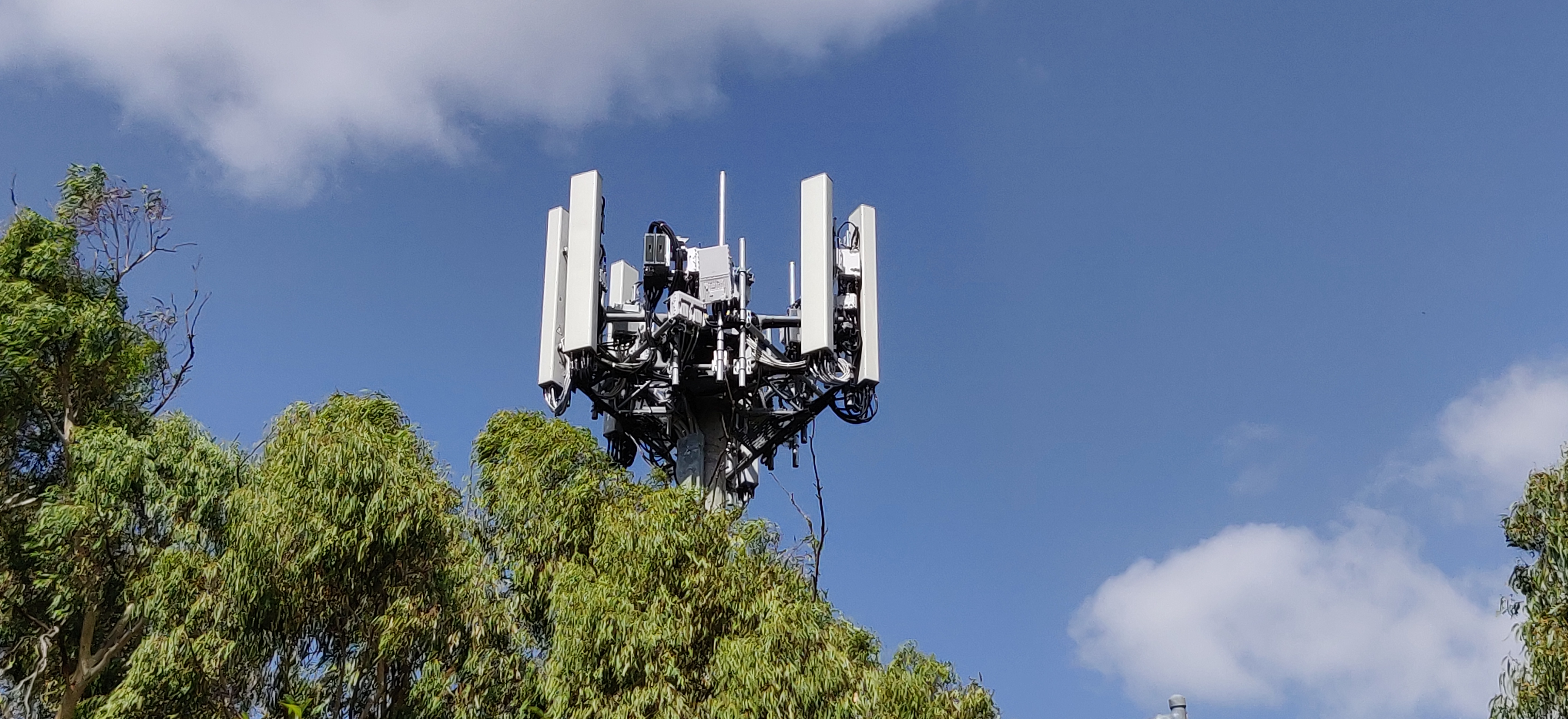Optus has today announced their plans for the rollout of their Nokia powered 5G network across Australia, with 5G powered customer facing Broadband plans due to go live as well.
The Optus rollout will see 1,200 5G enabled sites, going live across Australia by March 2020. Optus further plans to have 47 sites live by March. Optus’ initial rollout will concentrate on locating cells in the most populous locations targeting ‘residential locations and other key customer hotspots surrounding airports, train stations, sports stadiums and CBD locations.
There are three 5G enabled sites currently, with 5G enabled cells in Dickson and Manuka in the ACT, as well as Glendenning in Sydney. Sites will be enabled across most of Australia with 5G coverage planned in New South Wales, the ACT, Victoria, Queensland, South Australia and Western Australia.
The first 5G plan announced by Optus will offer customers a Home Broadband package offering unlimited data for $70 per month, with a 50Mbps satisfaction guarantee. Optus is expecting services to go live in Q2 2019, and as part of the rolloout will be selecting customers for access to their 5G Broadband plans with an expression of interest campaign, to find customers in selected areas with 5G service.
The first 5G device on the network will be ‘an off the shelf product’ from Nokia, a 5G Gateway device which will be available in the coming months.Optus will be supplying professional installation of the service and device for the first 50 customers who are successful in their EOI, but intend for the equipment to be self-install for future customers.
The rollout of 5G service is a big day for Optus, with Optus Chief Executive Allen Lew acknowledging that this is ‘an historic day for Optus as we begin our exciting 5G journey’.
The expansion of 5G service across Australia will progress, with Mr Lew saying they ‘will open the service up to more customers and more locations as more devices are released and our 5G cells continue to roll-out’. There’s no dates for rollout of 5G service for more regional areas including those customers living in the Northern Territory or Tasmania at this stage, but they will get there.
The Optus 5G service is initially partnering with Nokia for the launch, however Mr Lew has said that Optus will be adopting a ‘multi-vendor approach to our network technology infrastructure that will drive innovation and competition, which is critical to Optus’ DNA’.
This approach will see Optus upgrading and adding new mobile sites to their network, as well as ‘densifying’ their network with small cell solutions to ‘increase capacity and speed in highly populated inner city locations’.
The full list of sites to get 5G in the first wave includes:
ACT: 9 sites
- RUSSELL
- MANUKA – now live
- CAMPBELL
- WEETANGERA
- DICKSON – now live
- MITCHELL
- FRANKLIN
- HARRISON
- WANNIASSA
NSW: 22 sites
- BIDWELL
- WARWICK FARM
- ST JOHNS PARK
- BONNYRIGG
- TASCOTT
- NIAGARA PARK
- SPRINGFIELD
- YATTALUNGA
- WOY WOY BAY
- PHEGANS BAY
- KOOLEWONG
- DALEYS POINT
- GLENDENNING – now live
- ST HUBERTS ISLAND
- RICHMOND LOWLANDS
- SHALVEY
- LETHBRIDGE PARK
- BLACKETT
- EMERTON
- DHARRUK
- MINCHINBURY
- TREGEAR
QLD: 13 sites
- CLAYFIELD
- NEWMARKET
- AUCHENFLOWER
- KENMORE
- KENMORE HILLS
- MACGREGOR
- CAMIRA
- GOODNA
- BROOKWATER
- BELLBIRD PARK
- GAILES
- KALLANGUR
- BURPENGARY
SA: 3 sites
- TROTT PARK
- REYNELLA EAST
- OLD REYNELLA
WA: 13 sites
- MOSMAN PARK
- CITY BEACH
- KIARA
- LOCKRIDGE
- EDEN HILL
- SOUTH GUILDFORD
- BELLEVUE
- MIDLAND
- ORANGE GROVE
- WHITE GUM VALLEY
- HILTON
- HENDERSON
- WATTLEUP






why are we not talking about the potential devastating health effects associated with non-ionizing radiation that will be flooding every living organism in the technology’s range??? The science is clear. There is a very real risk.
The science?.. What science?… You mean the speculation? The hypothesis? – sounds just like the false information they want to feed you that having a mobile phone to your ear, using blue tooth technology/wireless etc will cause brain cancer. Its all speculation and a big bunch of Scientific guesses.
everyone is going to have something to say about the negative effects of technological advancements. There will always be speculation and anti – tech gurus preaching how cancerous it all is. Learn that there are larger forces at hand, playing money making cards to try and steer business in their direction. Its all about money
Jim must have watched that Catalyst program a few years ago about mobile phone radiation. The ABC since retracted the program and apologised for broadcasting it.
What health effects? We are surrounded by non-ionizing radiation sources every day, every where. FM radios, Bluetooth devices, WiFi hotspots, 3G and 4G cell towers, and even most electrical devices emit electromagnetic radiation.
However, the health effects of virtually of these are minimal.
I suggest you do some reading and educate yourself. Start here: https://www.ncbi.nlm.nih.gov/pubmed/17017346
Optus’ choice of locations can only be described as bizarre. For the 3G and 4G rollouts, the telcos started in the capital city CBDs, where more people could use it. Later they filled in the suburbs. But for 5G, Optus is starting in the far west and south west of Sydney, in the areas with the sparsest populations and lowest incomes. Nothing in Sydney’s CBD, and nothing at all in Melbourne. What’s their reasoning?
Possibly Optus is aiming at fixed internet and not phones. I haven’t checked the 5G rollout against a map showing the areas poorly serviced by the NBN. But Sydney suburbs like Bidwell – at the top of the Optus list – are largely housing commission areas. I’m not sure how many people there could afford to be early adopters of 5G.
the idea behind rolling out the 5G in areas with low density, means that if there are any complications or issues through the process – less people will be affected.
Ah, you’re referring to the radiation issue again.
I tell you what. I will volunteer to be a guinea pig to trial it. If they give me a brand new 5G phone, I will use it for 5 years, regularly putting it against my head to give my brain maximum exposure to the source of the ionic radiation. Afterwards, they can then check to see if I have cancer.
I’d have thought Jim was talking about potential technical problems with the roll out, not health scaremongering. It’s the same reason the early phases of the NBN were not built in the densest population areas. Get the technology working in “easier” areas, then expand.
An interesting mix of high and low socioeconomic status suburbs in WA, wonder what the planning reasoning is behind their choices here and elsewhere.
No Victoria?! Maaaaaan.
Hmm yeah that’s a list of high populous locations.. St Huberts Island, a small island on the central coast.. yep that’s well targeted.
North Kellyville and Beaumont Hills NSW are areas where there is virtually no viable 4G phone coverage and right in the middle of NW Sydney Growth area. I’m surprised to see the Richmond Lowlands (flood plain) getting this but nothing for the high density growth areas of N/W sydney.